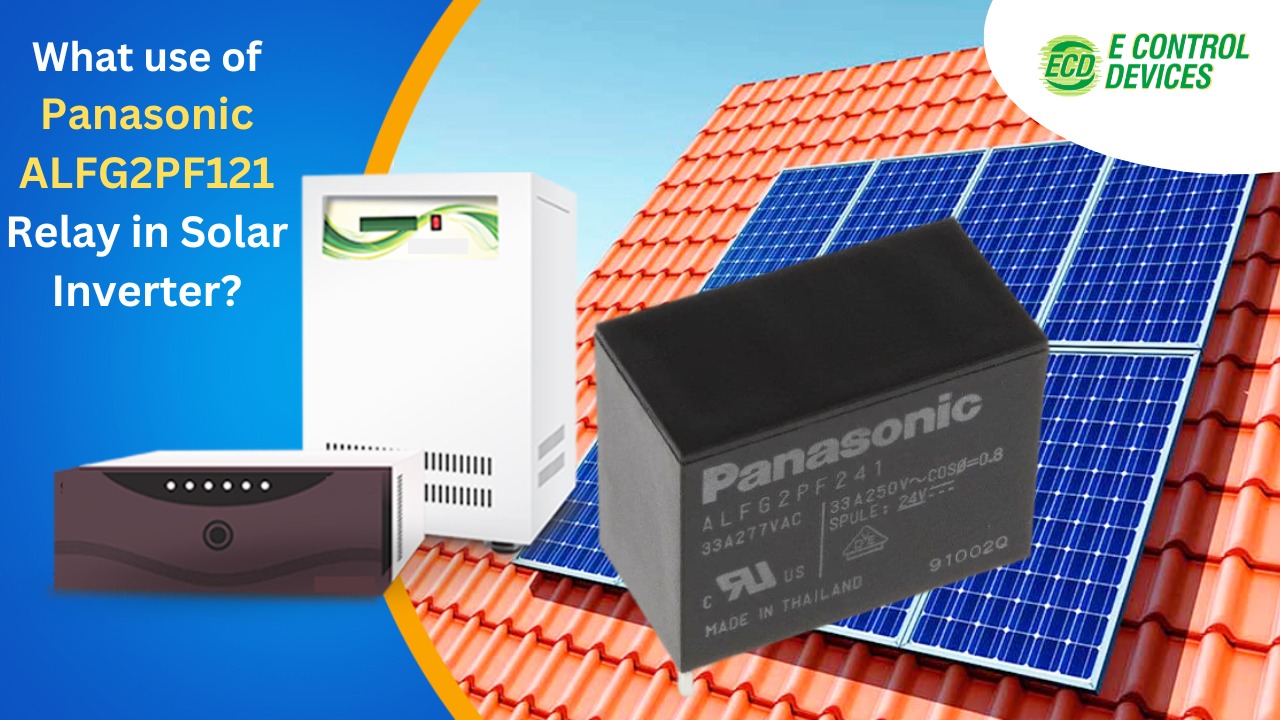Solar Inverter Use Panasonic ALFG2PF121 Relay? Why We Use This Relay?
Solar energy is a clean and renewable source of energy that has been gaining popularity worldwide as a means of reducing carbon emissions and mitigating the impacts of climate change. One of the key components of a solar power system is the inverter, which converts the DC power generated by solar panels into AC power that can be used in homes and businesses.
In this context, the Panasonic ALFG2PF121 relay has become a popular choice among solar inverter manufacturers. This relay is a high-capacity power relay that is designed to handle high-voltage and high-current applications, making it ideal for use in solar inverters. But what makes this relay so special, and why do manufacturers use it in their products?
Why Do Manufacturers Use Relay ALFG2PF121 In Solar Inverters?
Manufacturers use relays in solar inverters for various reasons, including:
Switching
Relays are used to switch the current flow in the inverter. They act as electronic switches that can open or close the circuit, allowing current to flow or preventing it from flowing.
Protection
Relays are also used for protection purposes. They can sense overloads, short circuits, and other faults in the system and quickly disconnect the circuit to protect the inverter and other components from damage.
Control
Relays can be used to control the operation of the inverter. For example, they can be used to turn on and off different components in the system, such as the cooling fans or the battery charger.
Efficiency
Relays can also help increase the efficiency of the inverter by reducing the power losses in the system. By switching off the circuit when there is no load or reducing the voltage when the load is low, the relay can help reduce energy wastage and improve the overall efficiency of the system.
What Is Panasonic ALFG2PF121?
Panasonic ALFG2PF121 is a power relay that is designed for high-capacity and high-voltage applications. It is a part of the ALF series of relays, which are widely used in various industries for their reliability, durability, and high-performance characteristics.
The ALFG2PF121 relay is a single-pole, double-throw (SPDT) relay that can handle up to 30A of current and up to 277VAC of voltage. It is a latching relay, which means that once it is energized, it remains in its current state until it is energized again in the opposite direction.
The ALFG2PF121 relay is designed to be compact, lightweight, and easy to install, making it an ideal choice for applications where space is limited. It is also highly resistant to shock and vibration, ensuring that it can withstand harsh operating conditions without compromising performance.
Its reliability, durability, and ease of installation make it a popular choice among manufacturers looking for a high-quality relay for their products.
Why Panasonic ALFG2PF121?
Manufacturers may choose to use the Panasonic power relay for several reasons, including:
- High capacity: The ALFG2PF121 relay can handle up to 33A of current and up to 250VAC of voltage, making it ideal for high-capacity applications such as solar inverters.
- Latching functionality: This function allows for efficient power management and reduces the need for a continuous power supply.
- Compact design: The design of the ALFG2PF121 relay makes it easy to install in applications where space is limited.
- Shock and vibration resistance: The relay is highly resistant to shock and vibration, ensuring that it can withstand harsh operating conditions without compromising performance.
- High reliability: This relay has a proven track record of reliability and durability, making it a trusted choice for various applications, including solar inverters.
- Cost-effectiveness: Despite its high-performance characteristics, the ALFG2PF121 relay is cost-effective, making it an attractive choice for manufacturers looking for a high-quality relay for their products.
How To Select The Right Relay For Your Solar Inverter?
Selecting the right relay for your solar inverter is important to ensure the reliable and efficient operation of your system. Here are some factors to consider when selecting a relay for your solar inverter:
- Capacity: Choose a relay that can handle the capacity of your solar inverter. This means selecting a relay that can handle the maximum current and voltage of the system.
- Voltage handling: Consider the maximum voltage of your solar inverter and choose a relay that can handle that voltage.
- Operating environment: Consider the operating environment of your solar inverter. If the system is exposed to harsh environmental conditions, such as extreme temperatures or vibration, choose a relay that is designed to withstand those conditions.
- Relay type: There are different types of relays, such as electromagnetic, solid-state, or hybrid relays. Choose the type of relay that best suits the needs of your solar inverter.
- Reliability: Look for relays that have a proven track record of reliability and durability. This will help to ensure that your solar inverter operates efficiently and without downtime.
- Cost: Consider the cost of the relay and balance it with the other factors. While you want to choose a relay that is cost-effective, you also want to ensure that it meets the requirements of your solar inverter.
What do E-Control Devices offer to its customers?
If you are a solar inverter manufacturer, E-Control Devices is your one-stop shop for all your solar energy needs. Our comprehensive range of solar products, including engineered fuels, thermally conductive adhesives and tapes, electric coatings from 3M, and many more products, are designed to meet the highest quality standards and deliver reliable, sustainable energy for your home or business.
With eControl Devices, you can trust that you’re getting the best products at competitive prices, backed by our expert support and installation services.
Our team is ready to help you make the transition to solar power and provide you with the peace of mind that comes with a more efficient and sustainable energy source. Visit the site now to get started.

